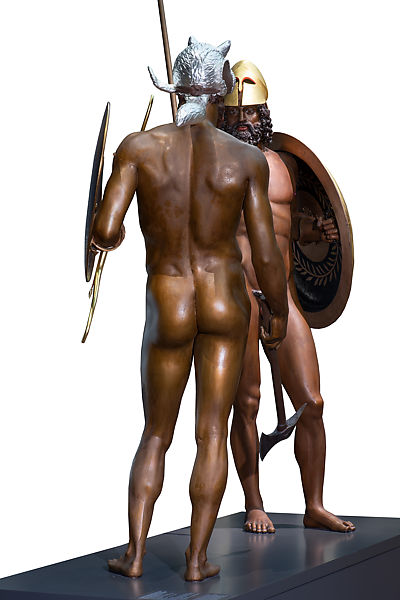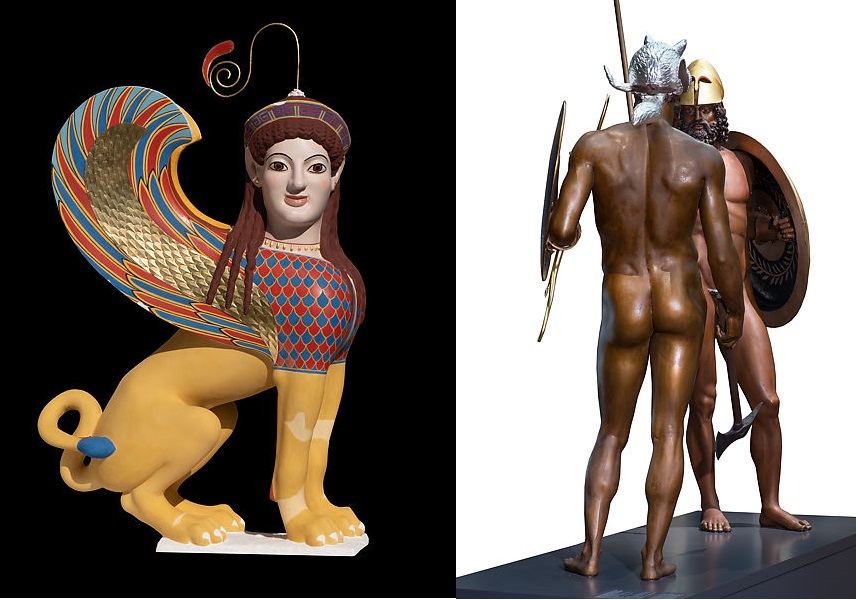The Metropolitan Museum of New York is holding a revealing exhibition into Ancient Greek and Roman sculpture titled Chroma: Ancient Sculpture in Color till March 26, 2023.
Visitors to the exhibition will be surprised to discover that contrary to popular belief, most sculptures in the ancient Mediterranean world were colorful. Paint, gilding, and inlaid materials animated and enlivened marble, bronze, and terracotta figures. Over time, much of that polychromy—the term derives from the Greek for “many colors”—has disappeared, leaving representations of humans, animals, and mythical subjects without their original definition and ornamentation.
Chroma: Ancient Sculpture in Color reveals the colorful backstory of polychromy—meaning “many colors,” in Greek—and presents new discoveries of surviving ancient color on artworks in The Met’s world-class collection. Exploring the practices and materials used in ancient polychromy, the exhibition highlights cutting-edge scientific methods used to identify ancient color and examines how color helped convey meaning in antiquity, and how ancient polychromy has been viewed and understood in later periods.
The exhibition features a series of reconstructions of ancient sculptures in color by Prof. Dr. V. Brinkmann, Head of the Department of Antiquity at the Liebieghaus Skulpturensammlung, and Dr. U. Koch-Brinkmann, and introduces a new reconstruction of The Met’s Archaic-period Sphinx finial, completed by The Liebieghaus team in collaboration with The Met. Presented alongside original Greek and Roman works representing similar subjects, the reconstructions result from various analytical techniques, including 3D imaging and rigorous art historical research. Polychromy is a significant area of study for The Met, and the Museum has a long history of investigating, preserving, and presenting manifestations of the original color on ancient statuary.
Explore the Sphinx in augmented reality with the Chroma AR web app.

The original color on the marble sphinx is unusually well preserved. Scientific analyses, photographs with ultraviolet and infrared light, false-colour photographs, and archaeological comparisons allow an almost complete reconstruction of the elegant designs in luminous and precious natural colours. Information is missing regarding additional detailing, such as fine lines subdividing the feathers, which may have been the final step in the original painting process.

These reconstructions represent two exquisite Classical Greek bronze statues found near Riace, Italy, in 1972. Research conducted during the reconstruction has led to important discoveries about the original appearance of the nude warriors. Sulphur residue in the corrosion layers shows that an artificial bronze patina was used to indicate skin color. The eyes featured inlaid stone, lips and nipples were copper, and the teeth of these figures were silver sheet. Surviving fitting elements show that Riace B wore a fox-skin cap (alopekis), and Riace A wore a Corinthian helmet that was likely gilded, according to ancient custom. This representation of the lost cap of Riace B was modelled by Christoph Bergmann based on depictions in a relief from the Athenian Parthenon.


